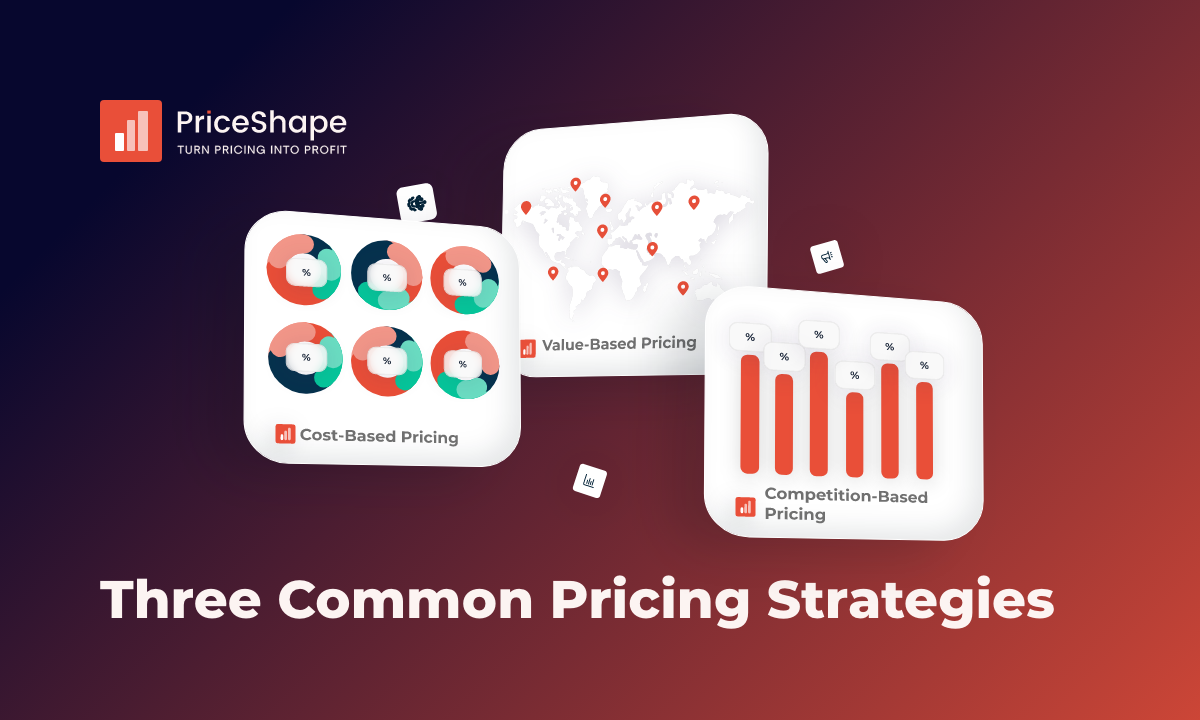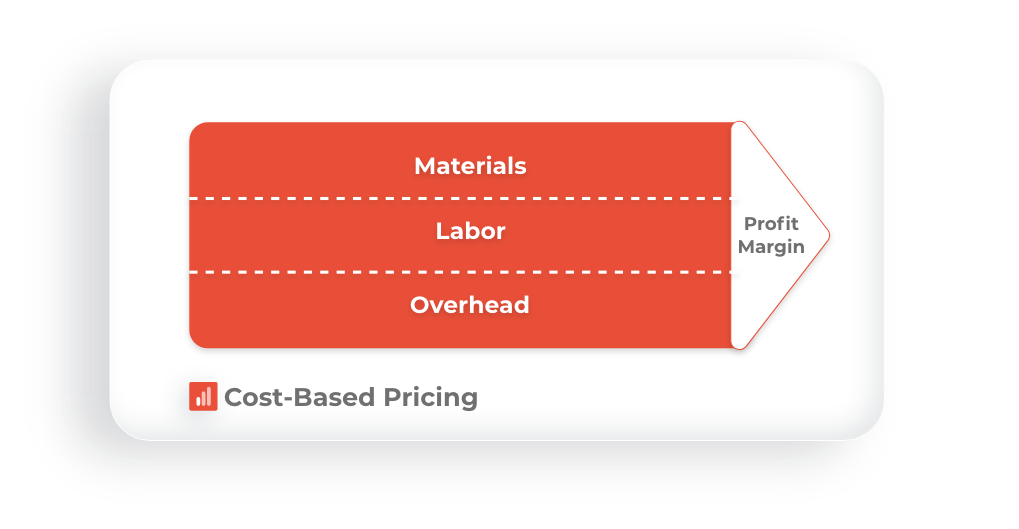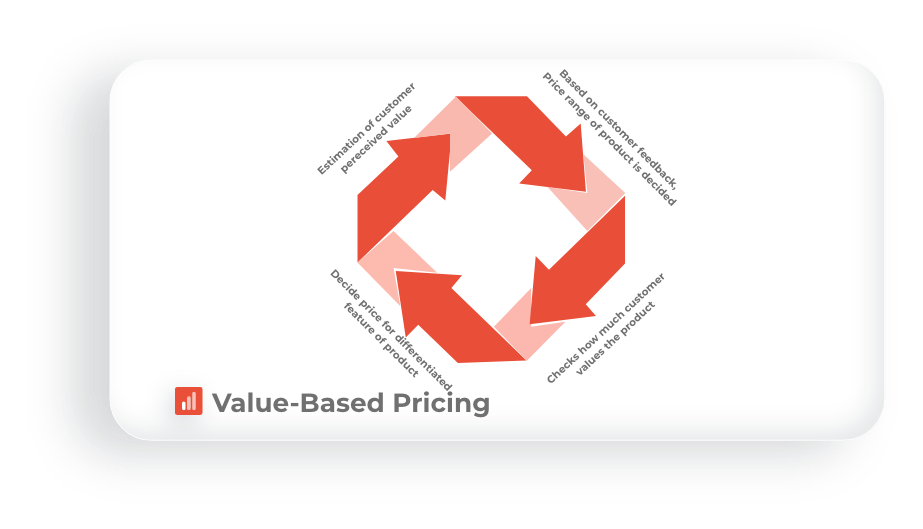3 common pricing strategies
Learn about the three most common pricing strategies for e-Commerce: Cost-Based Pricing, Value-Based Pricing and Competition-Based Pricing.

Pricing is an essential aspect of running an E-commerce store, as it can impact the profitability of your business and your ability to attract and retain customers. There are several different pricing strategies that you can use, each with its benefits and drawbacks.
Here is a brief overview of three common pricing strategies for E-commerce stores and why one is more important than ever, considering the market situation:

Cost-based pricing
Cost-based pricing involves setting your prices based on the costs associated with producing and selling your products. This strategy is relatively simple, as it only requires you to consider the costs of materials, labor, and overhead when determining your prices.
One advantage of cost-based pricing is that it helps ensure that you are covering your costs and generating a profit which always will be crucial. However, it can be difficult to accurately predict costs, especially when working with complex or customized products. Cost-based pricing may not allow you to compete effectively with other sellers, which can be a disadvantage in a competitive market.
Example of cost-based pricing
A custom furniture company calculates the total cost of materials, labor, and overhead for a dining table to be $500. They then add a 40% markup to ensure profitability, setting the final price at $700. This straightforward approach ensures all costs are covered while achieving the desired profit margin.

Value-based pricing
Value-based pricing involves setting your prices based on customers' perceived value of your products. This strategy involves understanding your target market and what they are willing to pay for your products.
One advantage of value-based pricing is that it allows you to charge higher prices for higher-value products, increasing your profitability. However, it can take time to determine the value customers place on your products accurately. You may need to conduct market research or test different price points to find the optimal price, which can be time-consuming and costly.
This was the second out of three common pricing strategies. Let’s look at Competition-based pricing, even if, for some, it sounds more unattractive than cost- and value-based pricing since it refers to actions based on others' decisions and not your own.
Example of value-based pricing
A premium electronics brand launches a new smartphone loaded with standout features like satellite connectivity, advanced AI-powered photography, and effortless integration with luxury smart devices. Even though it costs about the same to produce as competing phones, the brand sets the price at $1,499, which is well above the market average. The reason? Customers see real value in the innovation, the prestige of the brand, and the unique experience that comes with using the device. The price is based on what the product is worth to the customer, not just what it costs to make.

Competition-based pricing
One pricing strategy that can be especially effective in a highly competitive market is competition-based pricing, which involves setting your prices based on your competitors' exact or similar products.
There are several advantages to using competition-based pricing for your E-commerce store. First and foremost, it allows you to stay competitive in the market and attract price-sensitive customers. In these austere times, customers are more likely to double-check and research prices to save money. By setting your prices at or below your competitors' prices, you can make your products more appealing to potential buyers and win market share.
Additionally, competition-based pricing can help you respond quickly to changes in the market, as you can adjust your prices in real-time based on your competitors' prices. Competition-based pricing also helps you raise the price on all the products where you are priced too low. This increases the bottom line significantly and often doesn’t even affect the number of sales on the given product, as you can ensure that you still have the lowest price even though it has risen.
Competition-based pricing can be a valuable tool for E-commerce stores in highly competitive markets. By closely monitoring your competitors' prices and adjusting your prices accordingly, you can ensure that your products remain competitive and attract price-sensitive customers. It is crucial to consider the costs of selling your products and the value customers place on them in addition to competitive pricing when determining your prices. Finding the right balance between these factors can maximize your profitability and build a successful E-commerce business.
Example of competitor-based pricing
An online electronics retailer monitors competitors and notices that similar noise-canceling headphones are priced at $199. To remain competitive, they price their comparable product at $189, aiming to attract price-sensitive customers while maintaining a competitive edge in the market.
FAQs about different pricing strategies
What are the three most common and effective strategies for raising prices?
The most common and effective strategies are cost-based, competitor-based, and value-based pricing. Cost-based focuses on covering rising expenses, competitor-based responds to market shifts, and value-based justifies higher prices by emphasizing the unique benefits your product offers.
What are the most effective pricing strategies for a go-to-market launch?
Effective strategies include value-based pricing, penetration pricing, competitive pricing, and price skimming. Value-based focuses on the product’s unique benefits, penetration sets a low price to gain market share quickly, competitive pricing aligns with what others charge, and price skimming starts high to capture early adopters before gradually lowering the price.
What are the 3 most common pricing strategies?
The three most common pricing strategies are cost-based, competitor-based, and value-based pricing. Cost-based sets prices by adding a margin to production costs, competitor-based relies on what others in the market are charging, and value-based focuses on what customers are willing to pay based on perceived value.
Is it a mistake to avoid checking competitor prices?
That’s an option with the first two pricing strategies. However, at least 20 % of the assortment is often priced more than 10 % lower than the cheapest competitor. These facts imply that you can increase your gross margin by raising prices without losing sales.
Related article → The power of the second-cheapest pricing strategy
Also, a competitor’s out-of-stock situation is your potential. You can raise your price accordingly and benefit from the situation immediately. There are many different pricing strategies that businesses can use. The best strategy for a particular business depends on various factors, including the type of product offered, the industry, the target market, the competition, and the overall business goals. It's essential to carefully consider the pricing strategy that best supports the business's overall goals and objectives.
Don't want to spend your time manually checking your competitors' prices? PriceShape does that for you, gathering info about all your competitors and their prices in one place. You can test our services for free with your own product feed and see how you compare to other online shops.

